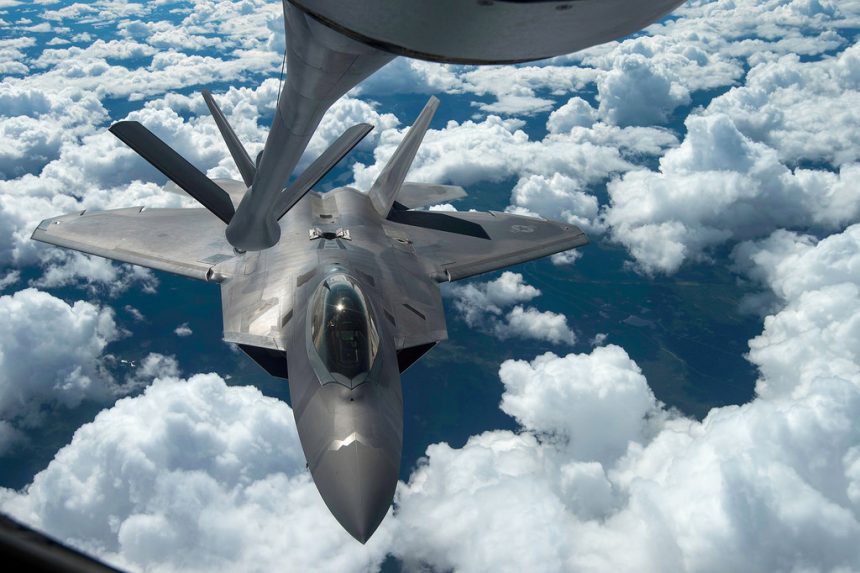F-22 Raptors to be deployed to Europe “very soon.”
The Air Force is about to deploy the F-22 Raptor 5th generation multi-role stealth fighter to the European theater, as a potential deterrent to Russian aggression, Air Force Secretary Deborah Lee James said on Aug. 24.
The Raptor deployment had already been announced in June, when Air Force Secretary, at Le Bourget airshow in Paris, said that Russia was the “biggest threat” her mind, but it now appears to be few days away.
So far the U.S. has responded to the proxy war in Ukraine and to the spike in Russia Air Force activity in the Baltic region with two 6-month TSPs (Theater Security Packages), made up of F-15s and A-10s, and stepping up its presence at regional exercises with NATO allies and partners, attended also by B-52 strategic bombers and A-10 attack planes.
Raptors have often taken part in rotational deployments in the Asia-Pacific region since 2009, but have never been deployed to Europe. It would be interesting to know which airbases are being considered for such deployment that should include 12 aircraft and 200-300 support personnel even though the aircraft will probably not be stationed at a single base but will perform short rotations to a few airports in eastern Europe as already done by the F-15s and A-10s of the previous TSPs (that have visited Germany, UK, Poland, Estonia, Slovakia, Bulgaria, etc.).
Although it was born U.S.’s premier air superiority fighter the F-22 has become a multirole aircraft that has had its baptism of fire in the air-to-surface role during the air war against ISIS: along with air-to-air missiles, the Raptor can also drop Precision Guided Munitions: two 1,000-lb GBU-32 JDAMs (Joint Direct Attack Munitions) or 8 GBU-39 small diameter bombs.
However, according to the U.S. Air Force, during the air campaign against the Islamic State in Syria and Iraq, the once troubled stealth plane has emerged as F-22 is pivotal to ensure the safety of the other aircraft involved in the air campaign: the Raptors act as “electronic warfare enabled sensor-rich multi-role aircraft” that provide key kinetic situational awareness to other aircraft: they escort strike packages into and out of the target area while gathering details about the enemy systems and spreading intelligence to other “networked” assets supporting the mission to improve the overall situational awareness.
Image credit: U.S. Air Force
















